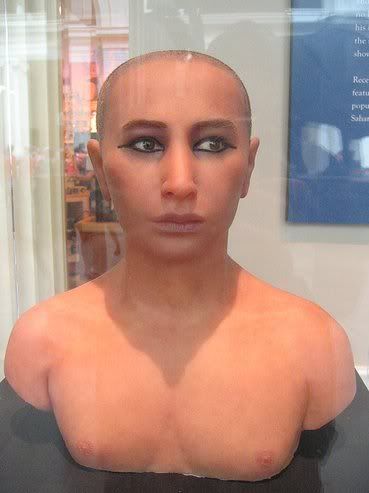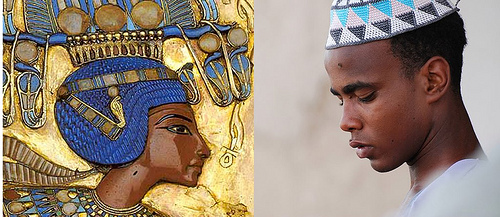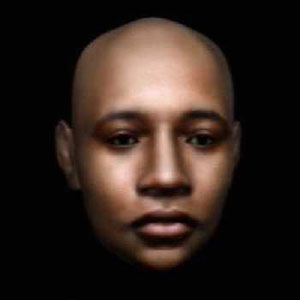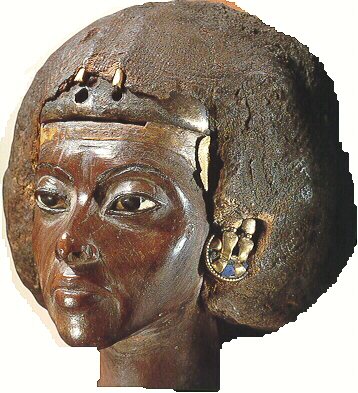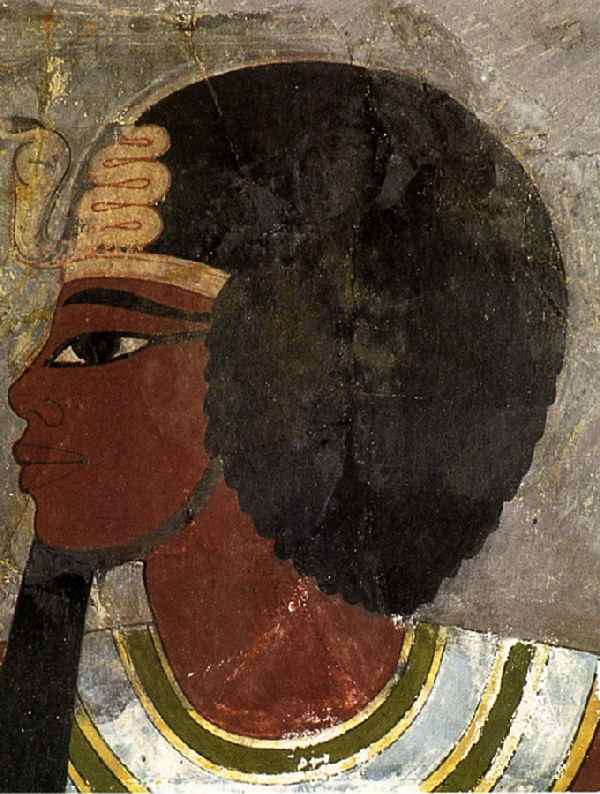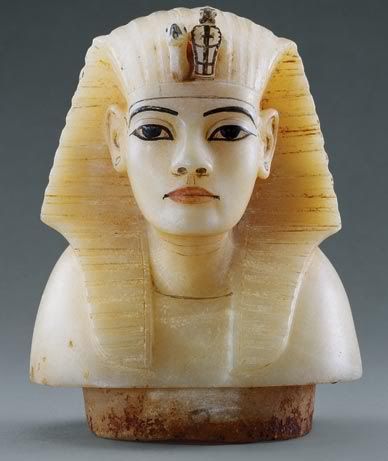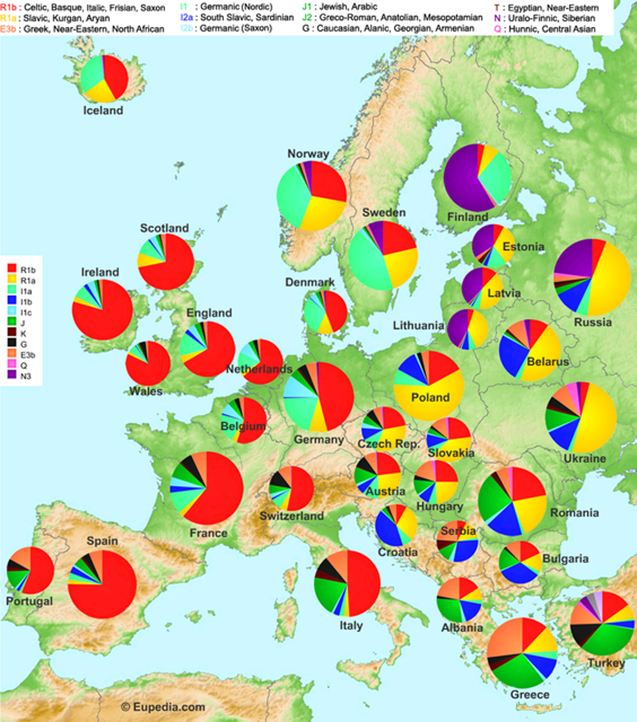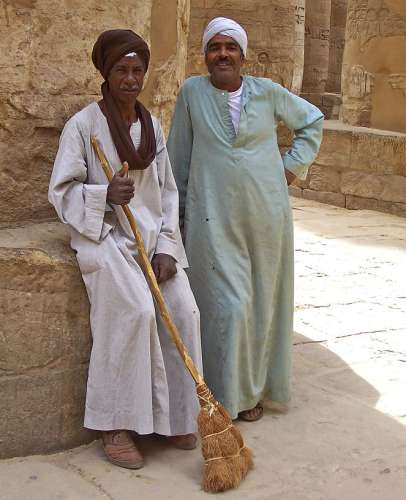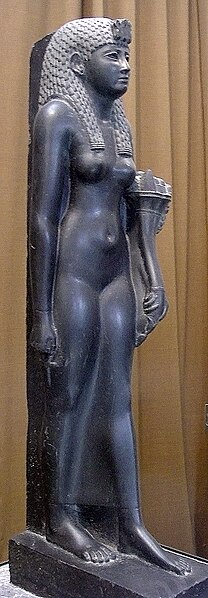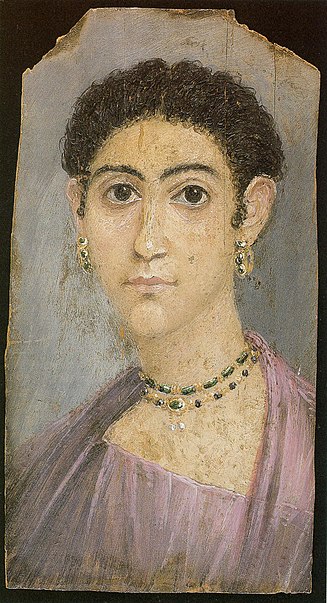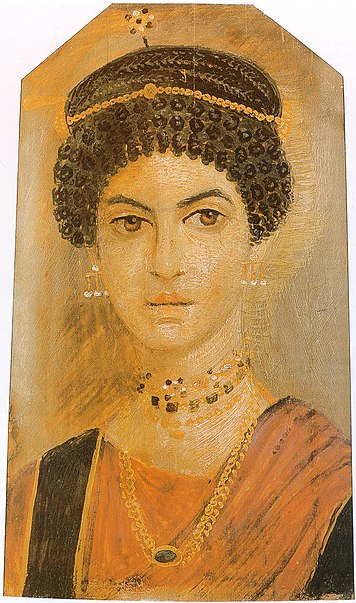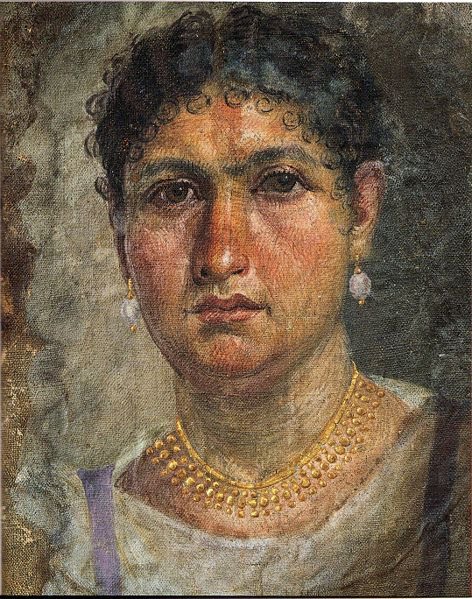Lord Zentei wrote:The bottom line is, you're switching between talking about sub-saharan affinities and being subsaharan rather conveniently in this thread.
The problem is that you clearly have a fundamental lack of knowledge in regards to these studies, and to compensate for your dumbassness you must resort to logical fallacies. The populations from the Levant stretching into southeastern Europe (Anatolia, Greece, ect) have been proven to have been
mixed with Sub Saharan Africans (and as a result shared some biological affinities towards Sub Saharan African populations) since the times of the Mesolithic, Neolithic and points later.
"A late Pleistocene-early Holocene northward migration (from Africa to the Levant and to Anatolia) of these populations has been hypothesized from skeletal data (Angel 1972, 1973; Brace 2005) and from archaeological data, as indicated by the probable Nile Valley origin of the "Mesolithic" (epi-Paleolithic) Mushabi culture found in the Levant (Bar Yosef 1987). This migration finds some support in the presence in Mediterranean populations (Sicily, Greece, southern Turkey, etc.; Patrinos et al.; Schiliro et al. 1990) of the Benin sickle cell haplotype. This haplotype originated in West Africa and is probably associated with the spread of malaria to southern Europe through an eastern Mediterranean route (Salares et al. 2004) following the expansion of both human and mosquito populations brought about by the advent of the Neolithic transition (Hume et al 2003; Joy et al. 2003; Rich et al 1998). This northward migration of northeastern African populations carrying sub-Saharan biological elements is concordant with the morphological homogeneity of the Natufian populations (Bocquentin 2003), which present morphological affinity with sub-Saharan populations (Angel 1972; Brace et al. 2005). In addition, the Neolithic revolution was assumed to arise in the late Pleistocene Natufians and subsequently spread into Anatolia and Europe (Bar-Yosef 2002), and the first Anatolian farmers, Neolithic to Bronze Age Mediterraneans and to some degree other Neolithic-Bronze Age Europeans, show morphological affinities with the Natufians (and indirectly with sub-Saharan populations; Angel 1972; Brace et al 2005), in concordance with a process of demic diffusion accompanying the extension of the Neolithic revolution (Cavalli-Sforza et al. 1994)."
"Following the numerous interactions among eastern Mediterranean and Levantine populations and regions, caused by the introduction of agriculture from the Levant into Anatolia and southeastern Europe, there was, beginning in the Bronze Age, a period of increasing interactions in the eastern Mediterranean, mainly during the Greek, Roman, and Islamic periods. These interactions resulted in the development of trading networks, military campaigns, and settler colonization. Major changes took place during this period, which may have accentuated or diluted the sub-Saharan components of earlier Anatolian populations. The second option seems more likely, because even though the population from Sagalassos territory was interacting with northeastern African and Levantine populations [trade relationships with Egypt (Arndt et al. 2003), involvement of thousands of mercenaries from Pisidia (Sagalassos region) in the war around 300 B.C. between the Ptolemaic kingdom (centered in Egypt) and the Seleucid kingdom (Syria/Mesopotamia/Anatolia), etc.], the major cultural and population interactions involving the Anatolian populations since the Bronze Age occurred with the Mediterranean populations form southeastern Europe, as suggested from historical and genetic data."
""In this context it is likely that Bronze Age events may have facilitated the southward diffusion of populations carrying northern and central European biological elements and may have contributed to some degree of admixture between northern and central Europeans and Anatolians, and on a larger scale, between northeastern Mediterraneans and Anatolians. Even if we do not know which populations were involved, historical and archaeological data suggest, for instance, the 2nd millennium B.C. Minoan and later Mycenaean occupation of Anatolian coast, the arrival in Anatolia in the early 1st millennium B.C. of the Phrygians coming from Thrace, and later the arrival of settlers from Macedonia in Pisidia and in the Sagalassos territory (under Seleucid rule). The coming of the Dorians from Northern Greece and central Europe (the Dorians are claimed to be one of the main groups at the origin of the ancient Greeks) may have also brought northern and central European biological elements into southern populations. Indeed, the Dorians may have migrated southward to the Peloponnese, across the southern Aegean and Create, and later reached Asia Minor."
F. X. Ricaut, M. Waelkens. (2008). Cranial Discrete Traits in a Byzantine Population and Eastern Mediterranean Population Movements Human Biology - Volume 80, Number 5, October 2008, pp. 535-564
and

Lord Zentei wrote:Whether his technique is being built upon is irrelevant to the fact that his study was flawed,
The fucking fact that his technique is still being built upon validates the use of the technique, hence minimizing the legitimacy that the technique is flawed. Furthermore, the main point of contention on that website that you linked me to, is the "off relationship" between South African populations and the Japanese. This broad relationship was explained in my earlier post, which you conveniently forgot to acknowledge.
Lord Zentei wrote:if you'll notice, no one is denying that Egyptians are also descendants of numerous invaders. But in the main, they're the descendants of the ancient population.
Who in the fuck is denying this? How does this help your argument? How does this somehow debunk, the proven fact that the vast majority of most modern Egyptians (urban northerners, who were most affected by foreign migrations) are not the best representative for what their core indigenous Egyptian ancestors looked like? What is the reason for more southerly modern African populations (like those in the Horn) showing closest biological affinities towards the ancient Egyptians, and not their "in the main descendants". It's quite clear what this is, and it would be a lot easier for you to admit why is you'd pull your head out of your ass.
Lord Zentei wrote: I must say that I find it hilarious that you accuse me of being "Eurocentric" simply because I don't think the Egyptians were black Africans when I've already stated that I hold that they were most probably indigenous.
Would you rather me just state that you are racially biased? Why else are you and some others so obsessed with proving that some waves of lighter skinned non Africans helped found Dynastic Egyptians culture, when you have no evidence to boot? The mere fact that you are so vehemently arguing this stance nothing more than speculation, shows that you all have your hearts vested in ideology rather than science. This is ironic because you all accused me of doing exactly that.
Lord Zentei wrote:Saying that they're in the main the descendants of the ancient Egyptians means rather more than merely "continuity has been maintained". Though of course, it means that too.
NO FUCKING DUH SHERLOCK !!! The problem is, that you are making yourself to be mentally incapable of also understanding that this does negate the proven fact that an alternation of biological affinities had occurred during Later Dynastic times. Late Dynastic Egyptians were proven to not be a good representative for the "typical" Egyptian series, who show closest relationships with more southerly African populations.
Lord Zentei wrote:But emphasizing the invaders at the expense of the natives when the phrase "in the main" was used about the relationship of the modern Egyptians
The "invaders" are the primary reason for the alternation of biological affinities. Do you not fucking understand, that they are the reason why ancient Egyptians went from overlapping with Nubians and Ethiopians to modern ones overlapping with Greeks?
Lord Zentei wrote:You'll notice that he's talking about northern Egypt specifically there, not the whole of modern Egypt? And that he's talking about the false impression of variability?


Case and fucking point, modern highly admixed northern Egyptians do not closely represent their earliest Egyptian ancestors, who were black Africans. Do you know who modern upper Egyptians show closest biological affinities with:
"..collected by Petrie in 1907 from a cemetery on a desert ridge to the south of Giza and dating from the 26th to the 30th Dynasties.. If, on the other hand, CRANID had used one of the Elephantine populations of the same period, the geographic association would be much more with the African groups to the south. It is dangerous to take one set of skeletons and use them to characterize the population of the whole of Egypt." (Barry Kemp, Ancient Egypt Anatomy of a Civilisation, Routledge: 2005, p. 55)


lets not forget about the Beja of southern Egypt:
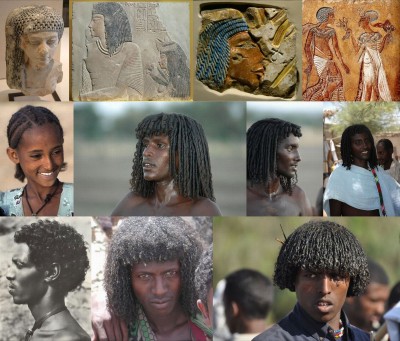
The closest "in the main" descendants of the ancient Egyptians appear to be the more African populations along the southern boarder of Nubia.

Lord Zentei wrote:Are you actually attempting to be as retarded as possible or do you not understand the difference between "particularly" and "exclusively"?
Your entire tooth and nail argument on about this quote is driven by nothing more than speculation, with shows your desperation to prove a moot point that you have an emotional investment in believing.
Lord Zentei wrote:Obviously, there was significant migration from the Mediterranean, no one denies this. This is particularly true with regards to upper Egypt and the cities.
For one dumbass "upper Egypt" refers to south not the north. With that being said it is Lower Egypt and primarily it's cities which have been most affected by significant migration from the Mediterranean during later Dynastic times.
Lord Zentei wrote:But that has nothing to do with the fact that the modern Egyptians (particularly rural Egyptians) are ethnically similar to the ancients.
Attempting to present yet another weak strawman argument to knock down! No one disputes that modern Egyptians (especially those in the south) have biological resemblance to their core indigenous ancestors. What is proven however is that most modern Egyptians as a result of admixture from the Middle East and Europe have endured a continuous alteration of biological affinities which became significant during times dating back to Late Dynastic times. What you also fail to mention is the fact that modern Horn African populations routinely overlap with Pre-Dynastic Egyptians, and modern Egyptians do not:

Notice Somalia's position next to Naqada, compared to the modern Egyptian sample. Why to populations who are "in the main descendants" not group with their core indigenous ancestors, while another population from the same broad geographical region does?
"Black populations of the Horn of Africa (Tigré and Somalia) fit well into Egyptian variations." (Froment, Alain, Origines du peuplement de l’Égypte ancienne: l’apport de l’anthropobiologie, Archéo-Nil 2 (Octobre 1992), 79-98)
Lord Zentei wrote:Oh shut the fuck up about Racial Reality, already. Petulant tool.
Well then stop relying on his bullshit misinterpretations of select studies.
Lord Zentei wrote:You are full of shit: he speaks of more than merely continuity. He says the following: "Did Egyptians in the second half of the dynastic period become biologically distinct from those in the first? .... These findings coincide with those of Brace et al. (1993, p. 1), who stated that the Egyptians were ‘‘largely unaffected by either invasions or migrations,’’ and do not support suggestions of increased diversity due to infiltration of outside physical elements."...YOU ARE LYING
No bitch
YOU ARE FULL OF SHIT! Once again, you have been presented with a more recent scholarly interpretation of Irish 2006 coupled in with other findings, which confirm that while continuity was maintained, their were biological alterations which were the result of demographic change entering the Nile. Further more the fact that Irish found that the inhabitants of Egypt from the Pre to the earliest Dynastic times, were of continuous local Northeast African origin:
Previous analyses of cranial variation found the Badari and Early Predynastic Egyptians to be more similar to other African groups than to Mediterranean or European populations (Keita, 1990; Zakrzewski, 2002). In addition, the Badarians have been described as near the centroid of cranial and dental variation among Predynastic and Dynastic populations studied (Irish, 2006; Zakrzewski, 2007). This suggests that, at least through the Early Dynastic period, the inhabitants of the Nile valley were a continuous population of local origin, and no major migration or replacement events occurred during this time.
Once again while continuity of certain dental traits have been confirmed, it does not negate the fact that an alternation of biological affinities occurred during Late Dynastic times:
Nutter (1958) noted affinities between the Badarian and Naqada samples, a feature that Strouhal (1971) attributed to their skulls possessing “Negroid” traits. Keita (1992), using craniometrics, discovered that the Badarian series is distinctly different from the later Egyptian series, a conclusion that is mostly confirmed here. In the current analysis, the Badari sample more closely clusters with the Naqada sample and the Kerma sample. However, it also groups with the later pooled sample from Dynasties XVIII–XXV. -- Godde K. (2009) An Examination of Nubian and Egyptian biological distances: Support for biological diffusion or in situ development? Homo. 2009;60(5):389-404.
Lord Zentei wrote:Yeah, apart from the fact that 90% of the UNESCO synopsium in Cairo rejected the idea that the ancient Egyptians were "black" and supported the idea that they were much the same as the modern population.
OK....Here in the second decade of the 20th century Egypt is finally once again being recognized as the black African civilization that it really was by mainstream scholarship. You respond with........Back in 1972 stepping off of the heels of the white supremacy era just about every white Egyptologist scuffed at the notion of a black Egypt. That makes about as much since as someone trying to disregard the current presidency of Obama by saying.....Barrack Obama is the president of the United States/In 1916 Barrack Obama would likely have been tarred and feathered for trying to run for for the oval office/
TIME AND AS A RESULT ATTITUDES FUCKING CHANGE dumb ass.
You completely fucking ignore the social-political climate and negative attitudes in regards to blacks of the fucking early 1970's and the symbolism associated with Diop and Obenga's intellectual ass whipping bestowed upon the world's leading Egyptology of the time. The whole point of "Afrocentrics" championing this story is that it proves the utter inability of Western scholars to accept what the proven facts indicate about the origins of ancient Egypt. Those same Egyptologist who almost unanimously gave those African scholars the subliminal middle finger for having the audacity to assert that such facts be acknowledged, rarely vocally disputed (let alone refuted) what Diop and Obenga were proving. One delegate even hopped out of his fucking chair and stated "
even if they were black skinned, they were still white".

Lord Zentei wrote: 
Say, do you understand that the fact that they were colonized from the Sahara to the west and from the south doesn't mean that they look like the
modern Sudanese? Or that there is high variability in African populations?
You have the audacity to wonder why somehow would accuse you and people like you of having a fucking racial stake in this debate. The quotation states that the ancient Egyptians had closest biological affinity to the populations of the Sahara and more southerly areas. This definition from the same fucking source, is what has historically defined what we in the Western society consider to be black Africans. In essence the quote is saying that the ancient Egyptians were generally black Africans.
"There is now a sufficient body of evidence from modern studies of skeletal remains to indicate that the ancient Egyptians, especially southern Egyptians, exhibited physical characteristics that are within the range of variation for ancient and modern indigenous peoples of the Sahara and tropical Africa.. In general, the inhabitants of Upper Egypt and Nubia had the greatest biological affinity to people of the Sahara and more southerly areas." (Nancy C. Lovell, " Egyptians, physical anthropology of," in Encyclopedia of the Archaeology of Ancient Egypt, ed. Kathryn A. Bard and Steven Blake Shubert, ( London and New York: Routledge, 1999) pp 328-332)
You are fighting tooth and nail against this with no real fucking evidence. You lost this debate GTFOH!

